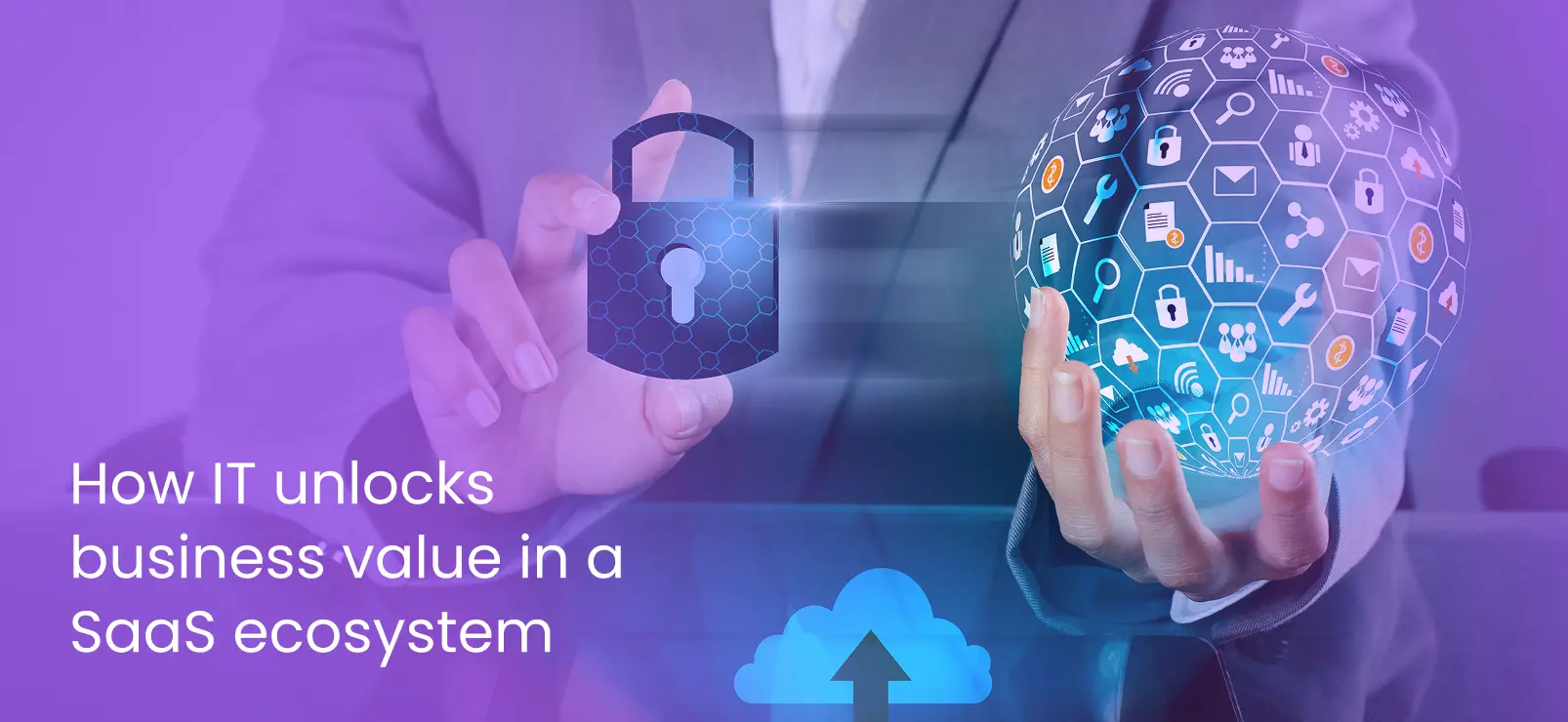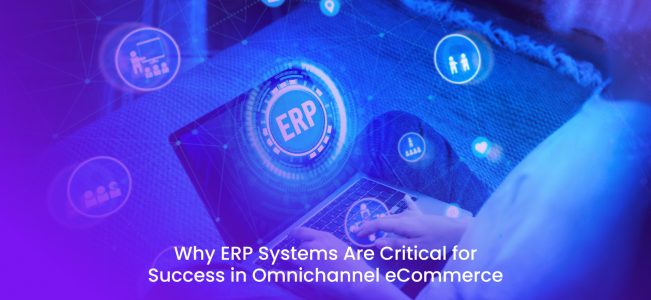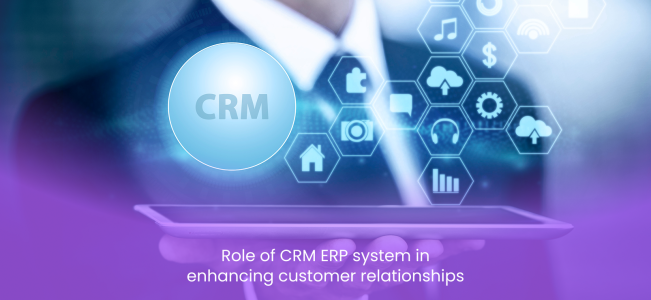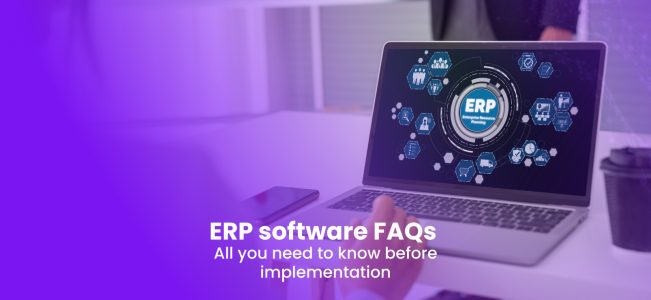How IT Unlocks Business Value In a SaaS Ecosystem
IT departments are transforming with businesses moving from traditional on-premises ERP systems to cloud-based SaaS solutions. This shift goes beyond just a technological upgrade; it essentially changes IT’s role within organizations. The move to SaaS doesn’t just advance IT infrastructure; it specifies priorities by shifting IT’s focus from keeping legacy systems to allowing strategic results via innovation, scalability, and agility. By obviating technical debt, SaaS platforms free IT teams from the headache of managing custom software, allowing them to focus on high-value initiatives that drive business growth.In this blog, we’ll explore how IT roles develop in a SaaS environment, including key topics such as adoption vs. development, scaling capabilities, innovation, technical debt reduction, real-time insights, extensibility, platform connectivity, and roadmap alignment.
A Strategic Shift: From Maintenance to Innovation
In traditional on-premises environments, IT teams spent much of their time managing servers, updates, and security, which restricted their ability to drive growth. However, SaaS platforms come pre-configured with industry best practices, allowing IT to focus on optimizing these solutions to meet business requirements instead of custom coding.This shift enables IT to move from a maintenance role to a strategic partner, aligning systems with business objectives and driving innovation, scalability, and growth.
Enabling Rapid Innovation with AI and ML
SaaS platforms offer fast access to advanced technologies such as Artificial Intelligence (AI) and Machine Learning (ML), allowing IT teams to execute these capabilities without extended development. Many SaaS providers already integrate AI/ML tools, enabling businesses to leverage predictive analytics, automated workflows, and advanced data modeling. Furthermore, SaaS’s scalable infrastructure ensures IT can deploy AI and ML solutions at scale, meeting increasing demands without performance blockages. This prompt integration of evolving technologies positions IT as a key enabler of innovation, helping businesses make smarter, data-driven decisions.
Scalability and Flexibility: Key Benefits of SaaS
Scaling on-premises systems can be a slow, expensive process, including hardware procurement and capacity management. SaaS platforms eradicate these challenges by offering dynamic scalability, allowing businesses to adjust resources on demand as their requirements evolve. IT teams can deploy new capabilities, such as customer relationship management (CRM), advanced analytics, or supply chain management, directly within the existing SaaS environment without the delays and costs linked with traditional infrastructure. SaaS solutions also come with application marketplaces that offer pre-integrated third-party solutions, further improving scalability. This flexibility allows IT teams to rapidly respond to business growth, ensuring that the organization can scale without operational challenges.
Breaking Free from Technical Debt
Custom-developed software usually collects technical debt, demanding continuous maintenance, updates, and fixes that prevent long-term growth. SaaS platforms improve this burden by offering standardized best practices, smooth upgrades, and low-code tools. SaaS providers manage system updates, ensuring businesses have access to the latest features without the risks of compatibility issues.By minimizing technical debt, IT departments can emphasize strategic initiatives instead of spending resources on handling complex, custom-built systems. The adaptability of low-code tools further allows IT teams to adapt systems to business needs without creating new technical debt.
Real-Time Data for Better Decision-Making
SaaS platforms offer real-time dashboards and analytics, allowing businesses to access up-to-the-minute data for decision-making. This shift from static reports to real-time insights strengthens IT departments to configure analytics that deliver actionable details across the organization. By integrating AI-driven analytics tools, IT teams can improve decision-making capabilities, offering predictive and prescriptive insights that enhance operational efficiency and guide business leaders in making informed choices. SaaS platforms also modify data across various departments, cutting silos and offering an integrated source of truth for improved collaboration.
Personalization for User Success
SaaS solutions strike a balance between standardized functionality and personalization, allowing IT teams to custom-made the user experience to meet specific business requirements. IT can create tailored dashboards, workflows, and user interfaces, enhancing productivity and user satisfaction.This personalization helps businesses ensure that users are not just implementing the system but employing it to its complete potential. IT departments can optimize these platforms to improve user experience, accelerating adoption rates and finally driving business success.
Breaking Down Silos and Improving Collaboration
Traditional ERP systems often attempt to integrate different applications, resulting in inefficiencies and misaligned data. SaaS platforms offer a connected ecosystem where data and workflows flow smoothly between departments. This integration allows better collaboration across teams, partners, and external stakeholders, improving operational efficiency.Prebuilt APIs and connectors in SaaS platforms enable IT teams to integrate third-party tools with less effort. This connected setting reduces IT overhead and allows businesses to emphasize strategic growth, cooperation, and innovation.
What’s Next for IT in the Era of SaaS?
Advancing to SaaS ERP systems helps both IT teams and businesses by freeing them from dealing with traditional, outdated systems and enabling IT departments to focus on driving innovation, a key factor in a company’s overall digital transformation. It allows businesses to grow and innovate faster through real-time data, cutting through technical silos, and offering exceptional scalability. Additionally, SaaS implementation improves businesses’ IT infrastructure and positions them for sustained growth, opening up new opportunities to add value in today’s dynamic digital landscape.
How CERP Suite Drives Value for Your Organization?
CERP Suite offers a comprehensive ERP solution built to simplify operations and drive business success in Pakistan. With modules for inventory management, HR, supply chain, and accounting, it offers real-time insights, automated processes, and integrated operations. CERP Suite personalizes its solutions to meet specific business needs, ensuring effective workflows and smooth integration. Whether through ERP consultation, implementation, or customization, CERP Suite supports businesses across industries to optimize processes, lessen costs, and accomplish maintainable growth. Its cloud and on-premise accessibility ensure businesses can manage operations effectively from anywhere, allowing them to stay competitive and efficient.












